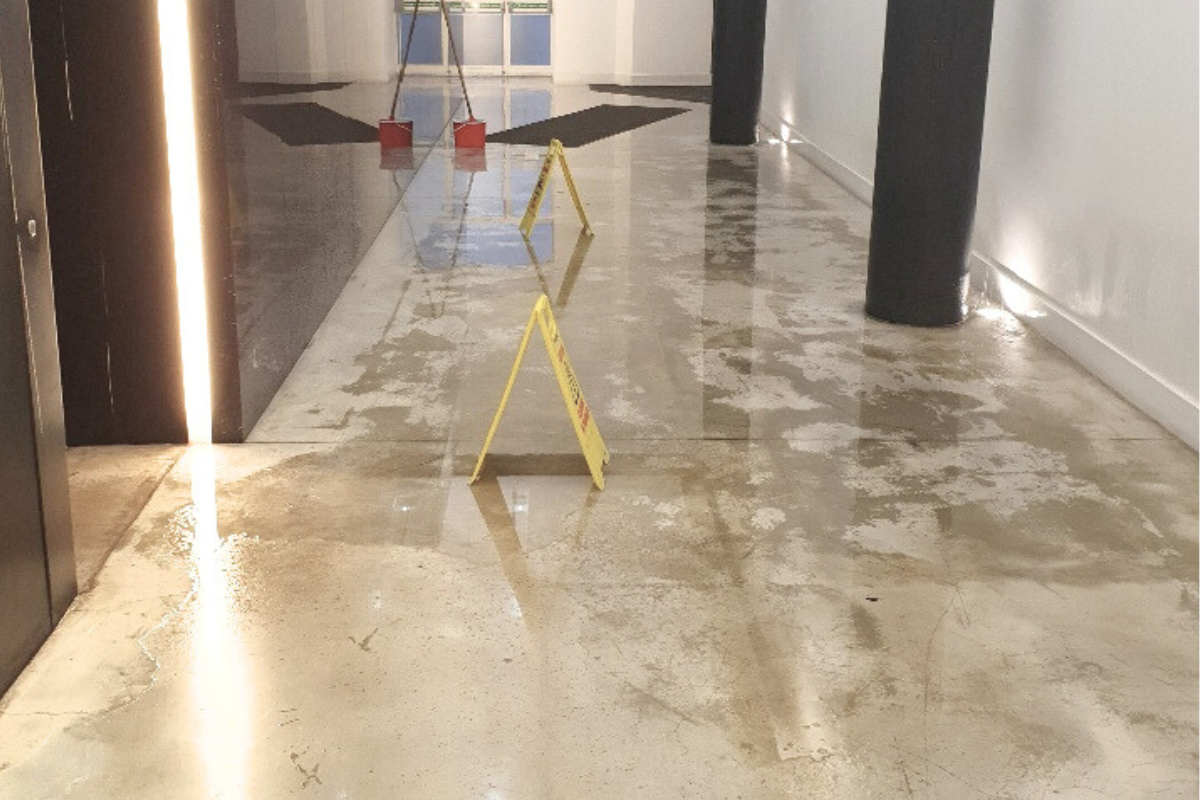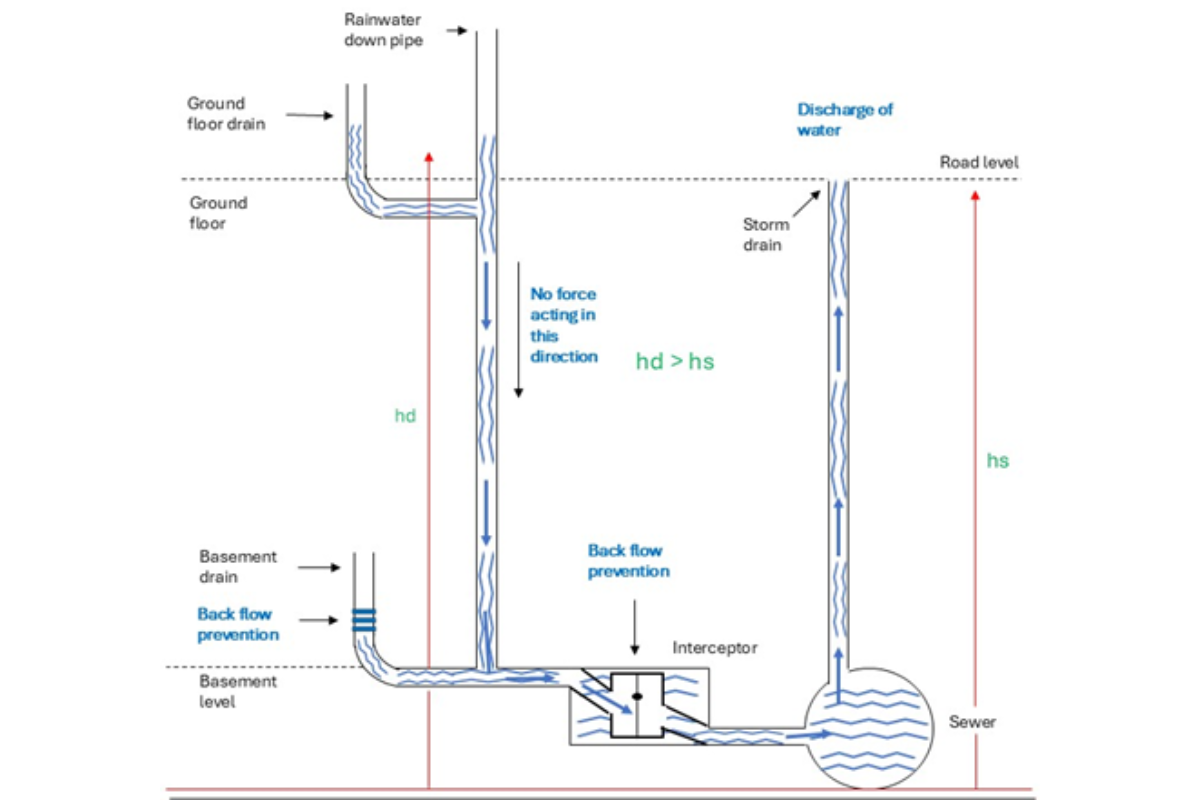Flooding is a persistent concern for property owners and facilities managers, often leading to costly damage and operational disruptions.
One of our clients experienced recurring basement flooding due to heavy rainfall, significantly impacting the building’s functionality and tenant safety. To mitigate this risk, they engaged Karsons Consulting to develop a robust and reliable drainage solution.
“Flooding in commercial buildings doesn’t just cause inconvenience. It halts operations, creates health risks, damages infrastructure, and costs thousands to fix.”

Key Objectives:
Identify and resolvethe root cause of the repeated basement flooding.
Implement effective backflow prevention to protect against sewer surges.
Enhance the building’s resilience against extreme weather conditions.
Ensure minimal disruption to tenants and ongoing operations.
→ Want results like this? Our team is just a call away.
Our initial assessment revealed that the property lacked adequate backflow protection, making it vulnerable to rising water levels during intense rainfall. Key risks included:
Unprotected sewer connections – Floodwaters surged back into the basement due to overwhelmed public drainage systems.
Ingress from multiple sources – Water was entering both from below (sewer connections) and above (rainwater drainage).
Insufficient rainwater management – The absence of a sump to regulate accumulation increased the risk of standing water.
Vulnerability of critical infrastructure – The main electrical incomer room was at risk of severe water damage.
To fully diagnose the problem, we commissioned a detailed drainage survey in partnership with our trusted contractor specialists. This provided insights into the building’s drainage network, allowing us to develop a structured, multi-layered solution.
→ Aging assets and building infrustructure can also be the cause of floods. Learn how to mitigate the risks of aging assets in our article here.
To prevent floodwater from surging back into the basement, we installed specialist non-return valves at key sewer connection points. These one-way devices allow wastewater to exit as usual but automatically close if water begins to flow back from the public sewer system, effectively blocking ingress.
Another vulnerable area was an entry point where both sewer and rainwater drainage posed a risk. To counter this, we installed additional one-way valves, reinforced drainage covers, and ensured secure sealing of external access points.
Basement vaults located beneath the pavement were particularly susceptible to rainwater ingress. We assessed all surface drains (gulleys), installed backflow prevention where required, and sealed redundant drainage connections to simplify and enhance security. Additionally, an old rainwater pipe was decommissioned and reinforced with a high-strength, double-locked cover to prevent water entry.
Internally, we addressed risks posed by wastewater backup from toilets and internal drains. By installing non-return valves on key plumbing connections, we prevented internal flooding near essential workspaces. Redundant drains were removed or sealed to further reduce exposure to flood risk.

Beyond the core drainage upgrades, we implemented further safeguards to ensure long-term flood resilience:
Electrical infrastructure protection – a protective barrier was constructed around the electrical incomer room to act as a failsafe against potential water ingress.
Ongoing maintenance and monitoring – to maintain peak performance, we recommended regular bi-annual inspections. We appointed a long-term partner to manage the system’s routine servicing and ensure continued reliability.
Significant reduction in flood risk, with enhanced drainage capabilities to withstand extreme weather events.
Improved drainage efficiency, ensuring controlled water flow and preventing backflow issues.
Enhanced building resilience, reducing operational disruptions and potential property damage.
Long-term cost savings by mitigating the risk of future flood-related repairs and insurance claims.
Every project provides valuable insights, and this case was no exception.
Holistic flood prevention requires multi-layered protection. Addressing only one aspect of flooding (such as below-ground drainage) is insufficient. A comprehensive approach considering both internal and external risks is crucial.
Regular drainage system inspections are essential. Many of the vulnerabilities identified in this project could have been mitigated earlier with scheduled maintenance and periodic condition surveys.
Future-proofing against climate change. With increased rainfall possible due to climate change, drainage solutions must be adaptable and reliable enough to handle evolving environmental challenges.
Collaboration strengthens outcomes. Partnering with expert drainage surveyors and maintenance providers ensured a more accurate diagnosis and a long-term sustainable solution.
Thanks to these targeted solutions, the basement in our Client's property is now significantly more secure against flooding. By tackling the issue from multiple angles - sewer protection, rainwater management, and infrastructure safeguarding - Karsons Consulting has delivered a sustainable, long-term drainage solution.
If you’re concerned about flood risks in your property or need expert advice for preventative mainteance, get in touch with us today. Our team is ready to help safeguard your assets and operations!
T: 020 3282 7605
Karsons Consulting are members of the Chartered Institute of Building Services Engineers, The Association of Consultancy and Engineering, British Institute of Facilities Managers and the Building Services Research and Information Association.